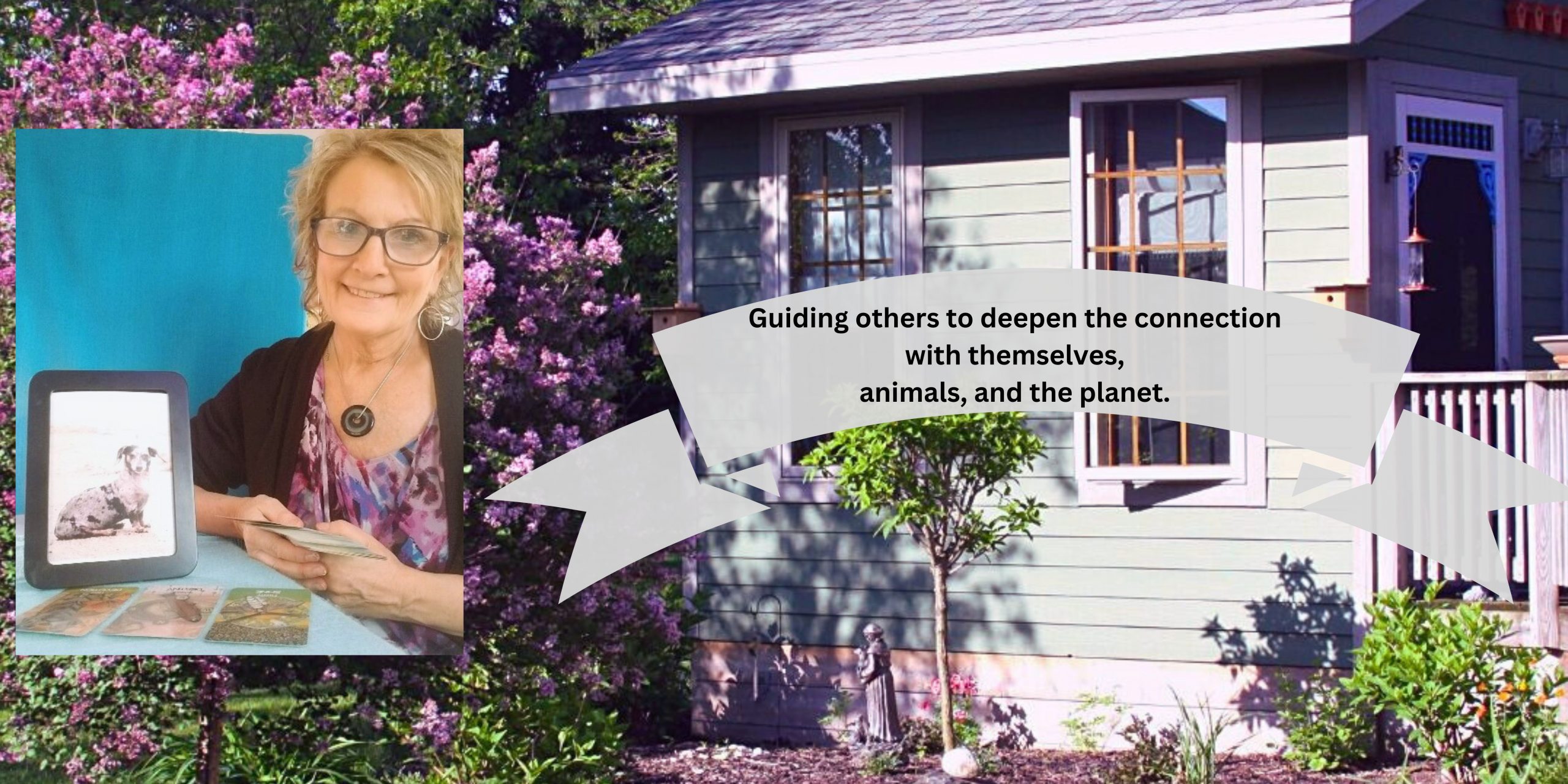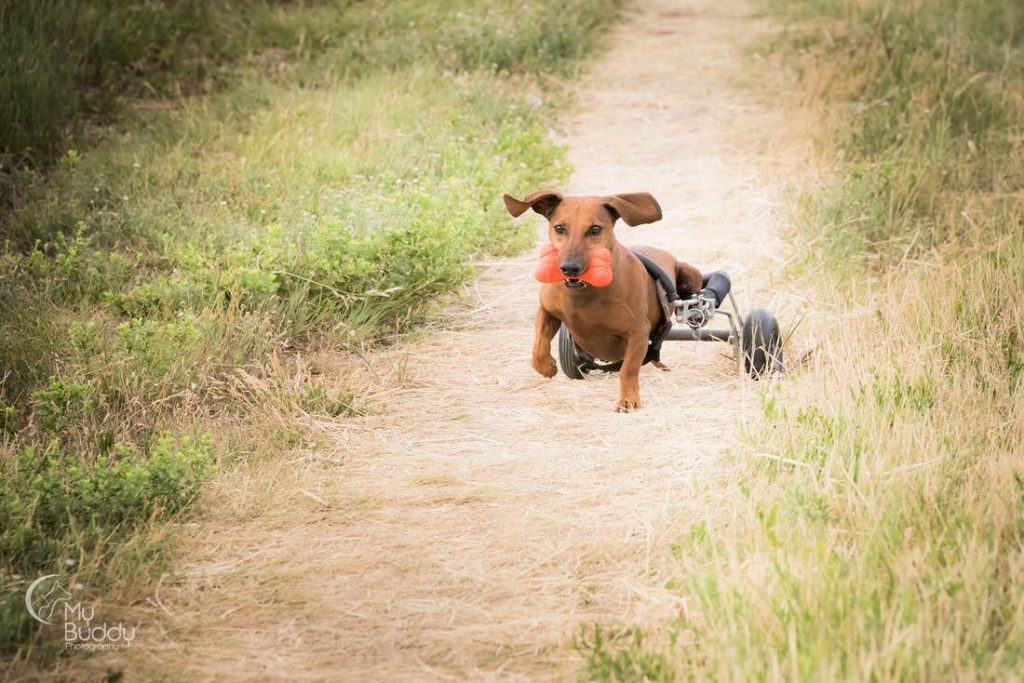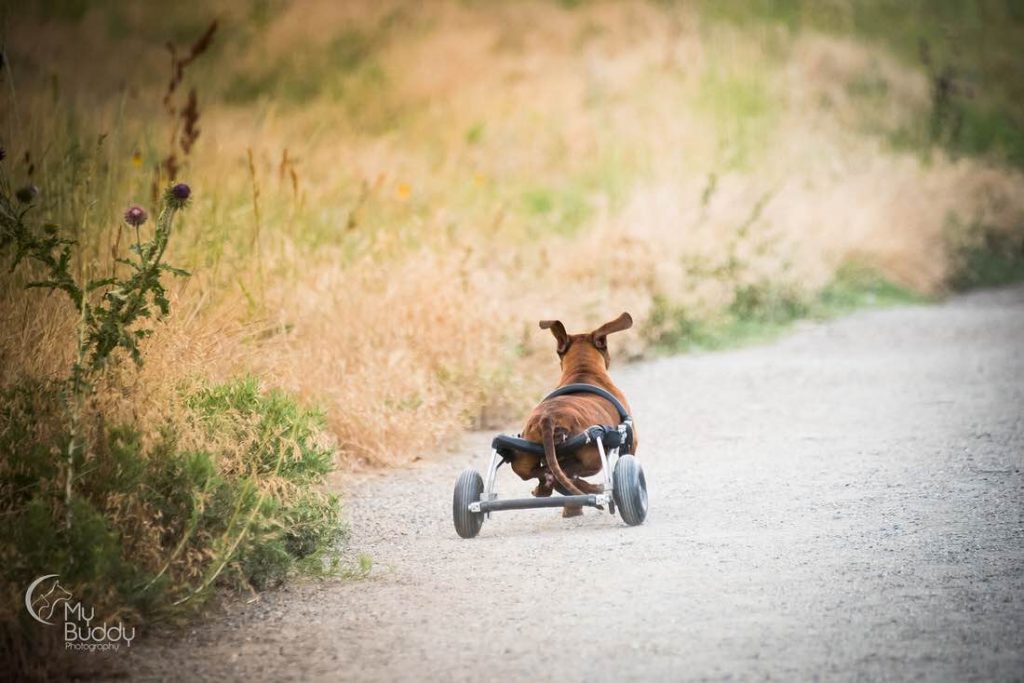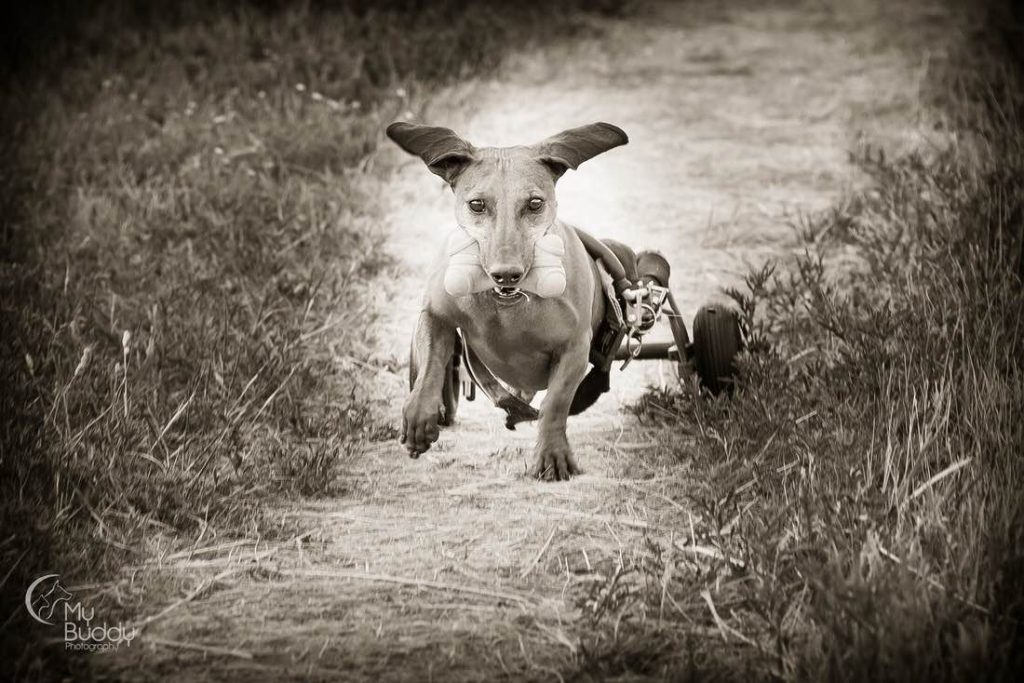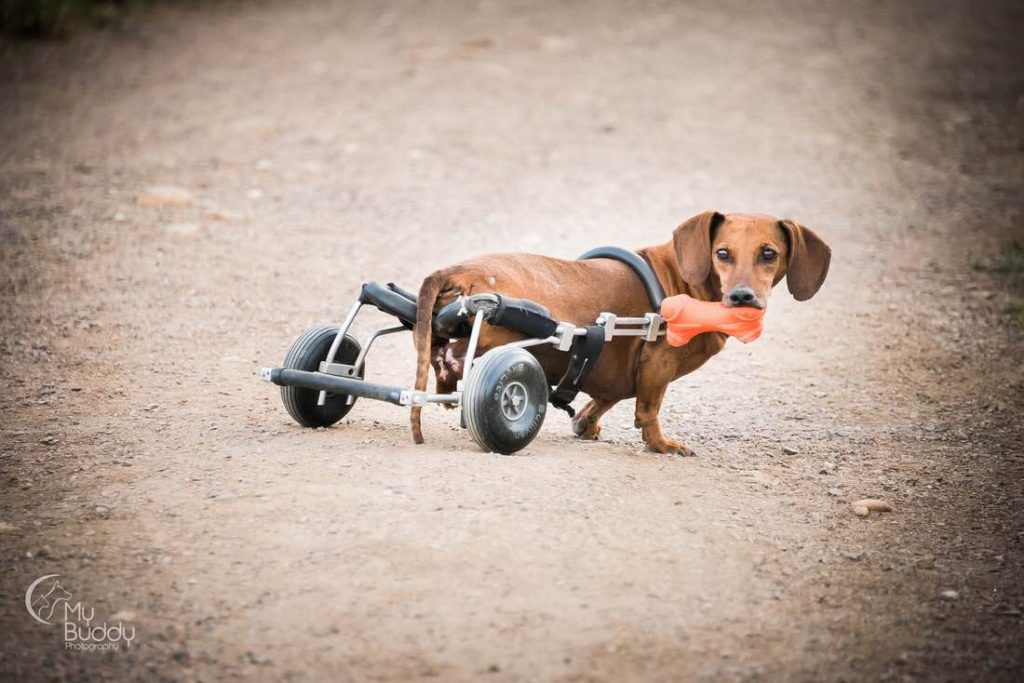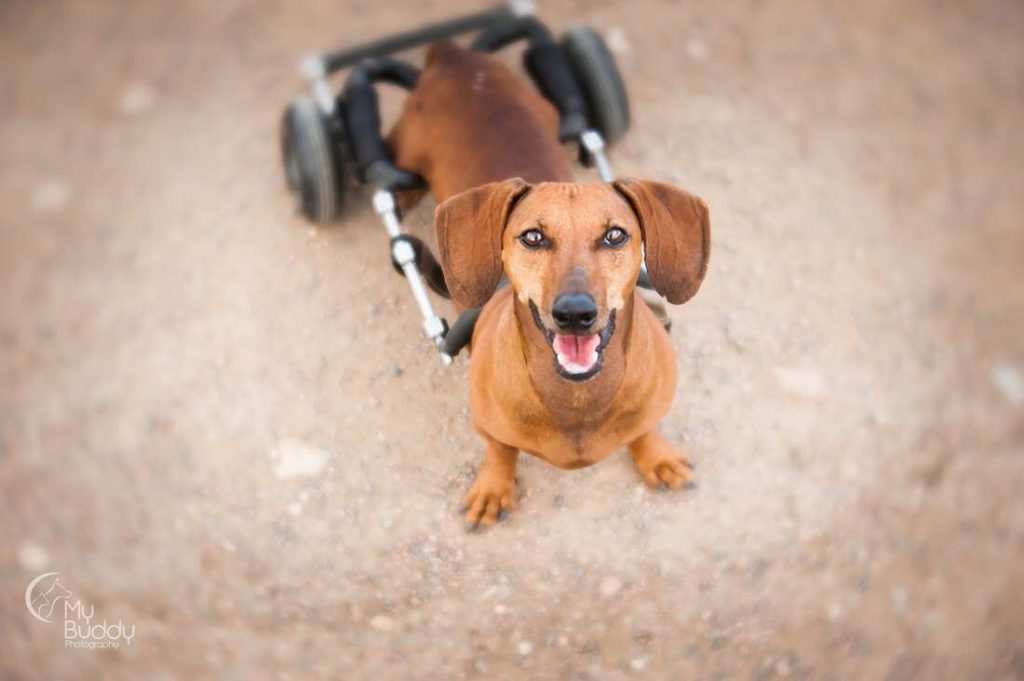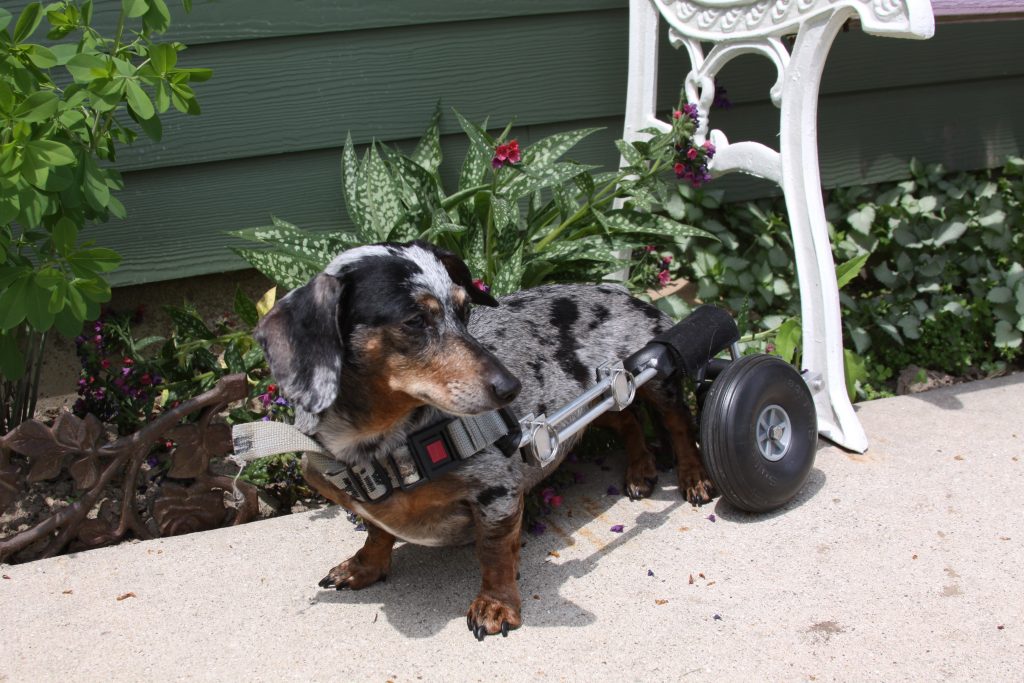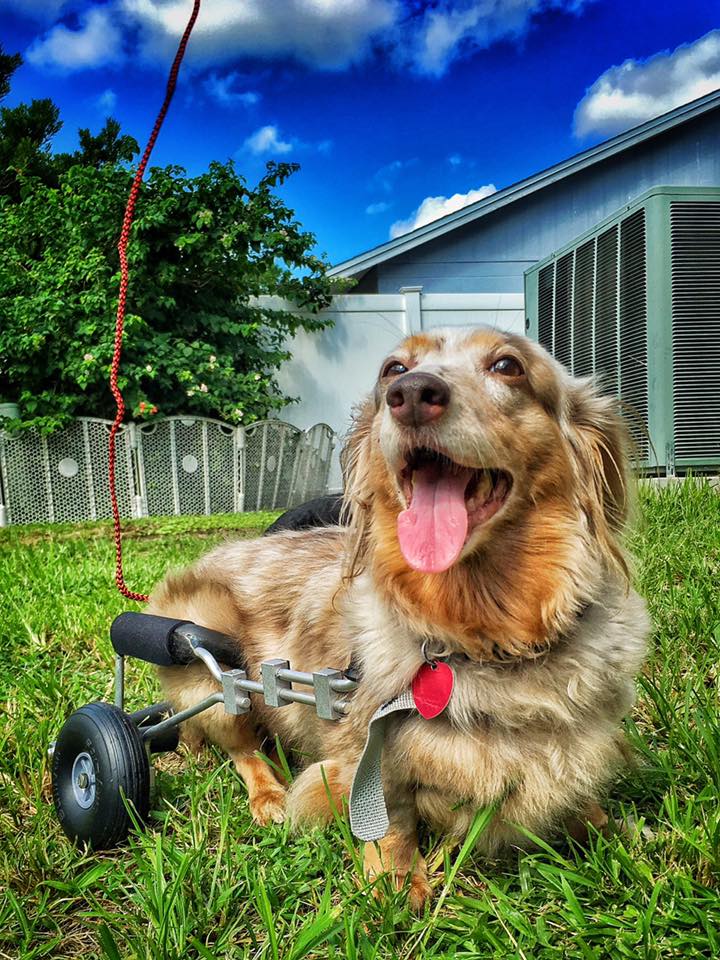
One of my greatest joys in life continues to being able to help a paralyzed dog walk again with the use of a wheelchair. Meet Molly Mocha who I heard about through one of my favorite disabled dog sanctuaries, Lovey Loaves.
As per Lovey Loaves website: Molly Mocha is 12 years old and weighs 17lbs and considered a chocolate cream dapple dachshund. Her hind legs are paralyzed and she was diagnosed with IVDD at two years old and has dragged her hind end for the past ten years. She now has an Eddie’s Wheels cart that she uses regularly to run and play! Due to her hind end paralysis, Molly does require bladder expression.
Molly Mocha is available for adoption and she comes complete with her brand new spanking speedy wheels! Please contact Lovey Loaves if you are interested.
Again…thank you to all that continue to support my mission to help paralyzed dogs in need. Without those generous donations I couldn’t do what I do. It takes a team and I’m grateful for everyone who has helped me in the past and continues to help. To learn more about the fund and/or to donate please visit here: http://nationalwalknrolldogday.com/donate-to-the-frankie-wheelchair-fund/
Molly Mocha’s wheelchair is custom-made by Eddie’s Wheels for Pets. To learn more about them please do visit their website!
…and today I was able to grant another wheelchair to a paralyzed dog in need… which brings it to 60 dogs the Frankie Wheelchair Fund has helped! YAY!! And I’m pretty sure I heard a ARF-A-ROO echo on down from heaven from Frankie!
Thank you for sharing and subscribing to my blog updates.
